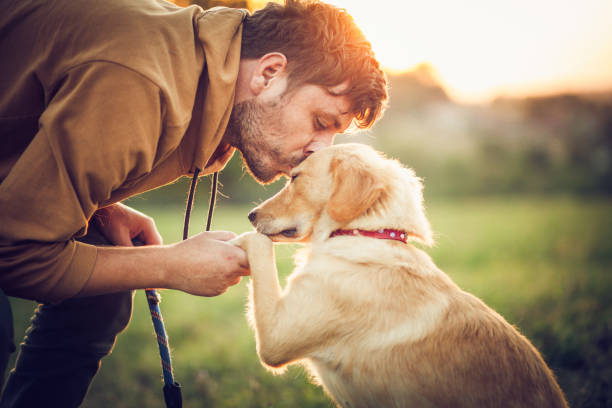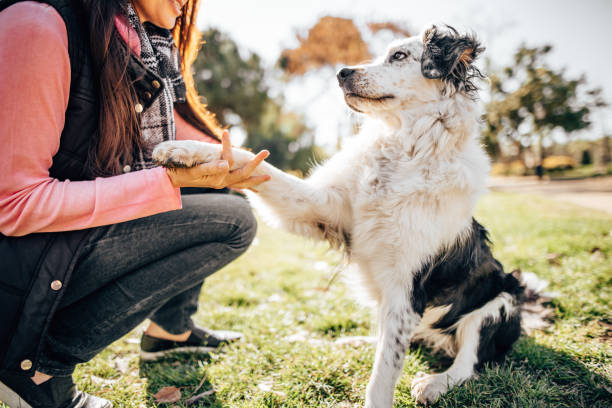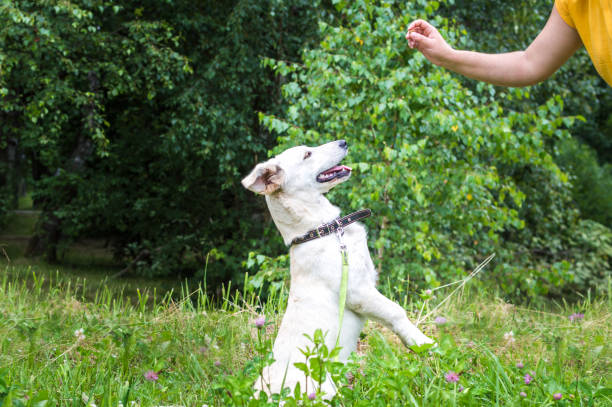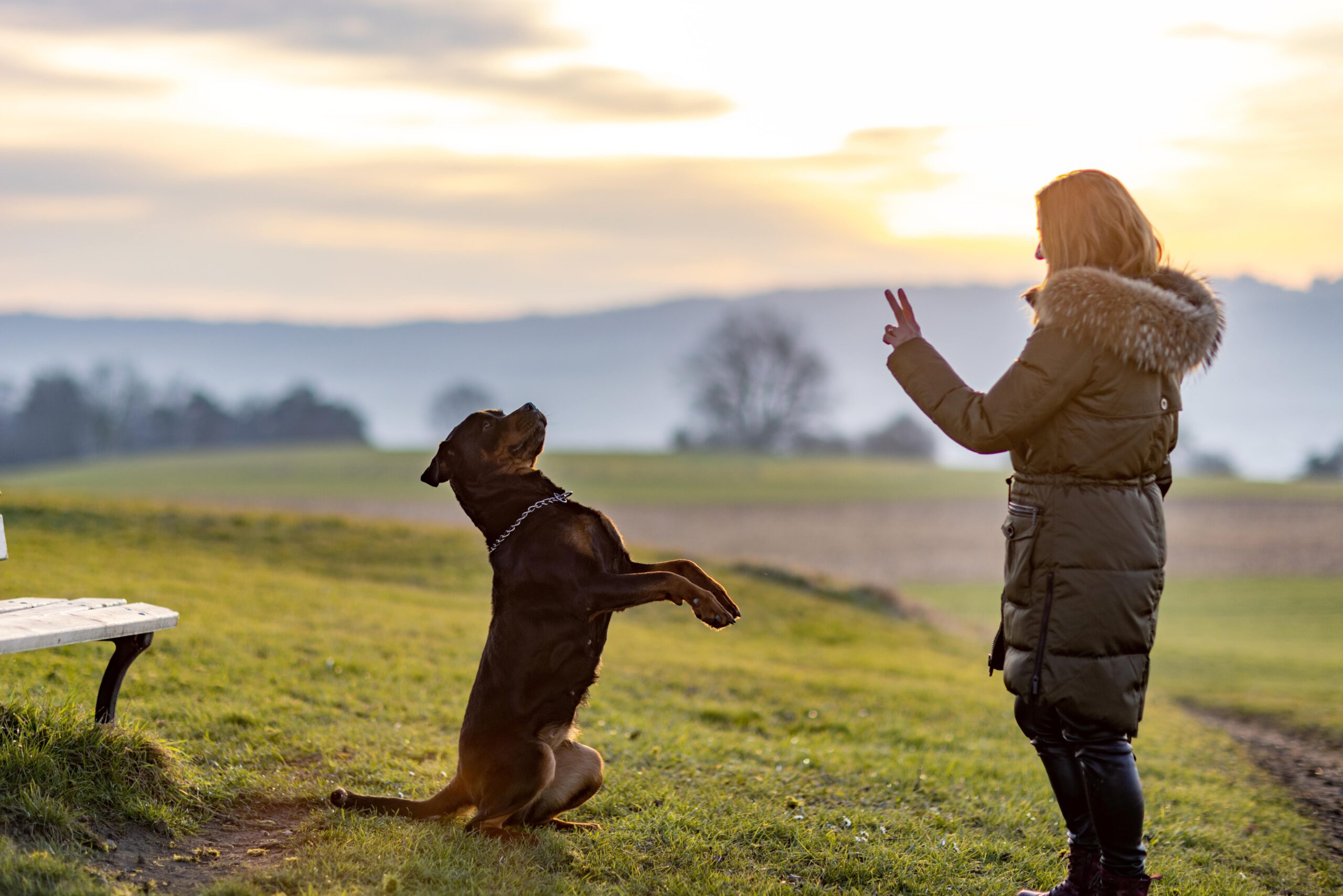How to Train a Dog – 7 Steps for Beginners
To teach your dog to come when called, start training in a quiet environment. Begin by putting them in a sit, then guiding them almost to the floor with your empty hand while saying their name and a release word.
Lure with a high-value treat. Once they are glued to your side, begin moving around, rewarding frequently when they are directly by your side.
1. Start Early
Puppies can’t learn a new behavior in only one session, so start training early. Short sessions repeated throughout the day are more effective than long training sessions.
Teach your dog basic obedience commands such as “sit” and “come.” Lure them with a treat on the floor and say their name, followed by a click and a reward to reinforce the desired behavior.

Discourage unwanted behaviors such as barking by distracting them with something else, such as playing with a toy or walking them around the house. Do not yell at them to stop barking, as they will learn to bark even more to get your attention.
To teach your dog to lie down on command, begin by rewarding them when they do so (with a lure if necessary). Then gradually add the release cue, saying their name as you stand up and give a slight backward step.
2. Keep it Fun
Dogs will perform behaviors that seem misbehavior to us if they think it’s the smartest choice in an environment. It’s up to you to change their views and convince them of the alternative behavior you consider desirable.
Try using a clicker to teach your dog a new behavior. For example, if your dog lunges for food when you approach them to feed them you could say “no” and then use the clicker to tell them to drop it instead.
Practice this in low distraction environments, such as your home, before moving onto busier or more challenging ones like the park. It’s a good idea to train in short sessions (five to ten minutes) so you don’t overwork your dog. Make each session fun and rewarding.
3. Set a Schedule
It’s important to train your dog on a regular basis to establish consistency. It’s much easier for your pet to understand what you mean when there are consistent habits in place.

For example, your dog may need to go outside right after waking up, take their breakfast, have some playtime, and then have another potty break before dinner time. If everyone in your household follows this routine, your pet will learn to associate these actions with a certain time of day and will be more likely to perform them in the same location or situation.
Ideally, training sessions should be short–any longer and your dog will get bored or distracted. Try to keep training to around five minutes per session and be sure all family members are on the same page with verbal cues.
4. Make it Rewarding
Dogs learn through positive reinforcement, so it’s important to offer them treats or food when they perform a command. However, it’s also important to avoid unintentionally rewarding unwanted behaviors. Jumping or barking to get attention are examples of behavior that should not be rewarded. Instead, they need to be stopped by a verbal cue (sit) and then rewarded when they do sit.
Another great way to make training rewarding is by introducing challenges. For example, once your dog can successfully leave a treat in your open hand quickly enough, try putting the treat down and then closing your hand into a fist. Most dogs will give up trying to grab the treat within seconds but if they don’t, continue to train by resetting and offering the treat.
5. Don’t Repeat Yourself
Trying to train too much at once can be overwhelming for your dog. If your dog seems to be struggling with even the simplest commands, try training in a calmer environment, and breaking the behavior down into smaller steps.
For example, when training a puppy for recall, it’s often helpful to start small and work your way up. Recall your dog from a short distance, and then praise them and give them treats as they come toward you. Repeat this over and over again, slowly increasing the distance between you.
This will teach your dog that coming to you is a fun thing to do, and not a punishment for interrupting their playing or running around. This will also help prevent them from developing a negative association with recall, such as believing that it means the end of their play session.
6. Don’t Forget to Praise
If you want your dog to associate a specific behavior with a positive consequence, it is important to praise and reward her at the exact moment she performs it. This is called continuous reinforcement. This means that for example, if you call her to come back and she does so, you give her praise and a treat.

Even if your dog is not motivated by traditional treats, you can still use other forms of positive reinforcement such as petting, a play session or short walk. Also remember that you should always end training on a high note. For example, if you have worked on the “down” command and your dog has successfully remained lying down, praise her and give her a treat. This will help her to associate the command with a good outcome and to remain consistent with her performance.
7. Be Patient
Even with patience, training a dog takes time. It’s important to be patient and stick with it, especially when things don’t go exactly as planned.
For example, if your dog barks every time the doorbell rings, you will need to spend some time with them working on desensitizing the trigger. Typically, this means doing short training sessions at home (for example, walking around the backyard on a loose leash) before attempting it in more distracting environments like parks.
Be sure to reward good behavior with treats, affection, or verbal praise. If you use negative reinforcement, such as correcting your dog or yanking on the leash, it can cause them to think that coming to you is no longer fun and could eventually become a bad habit.

